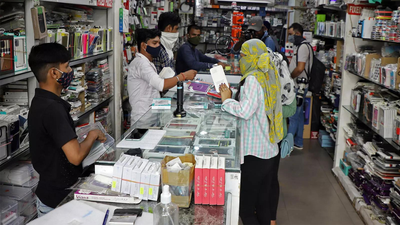ARTICLE AD BOX

India’s economy is expected to sustain steady growth in the second half of the current financial year, supported by strong domestic consumption even as global uncertainties continue, according to a report by SBI Capital Markets (SBICAPS).The report said that while trade tensions and external risks persist, India’s internal demand remains a key stabilising factor. It added that with the United States imposing steep 50 per cent tariffs on Indian goods, policymakers have been prompted to rely more on domestic growth levers.
Piyush Goyal Says India Aims to Remain the Fastest-Growing Large Economy for the Next 20 Years
As per news agency ANI, both the Union and state governments have stepped up capital expenditure in the year-to-date FY26 period, which is expected to reflect in higher gross fixed capital formation. Recognising the importance of domestic consumption, the government also timed recent GST rate changes with the festive season. The Confederation of All India Traders (CAIT) has estimated that festive sales will touch a record Rs 4.75 trillion this year, with early signs of this buoyancy seen in strong year-on-year growth in auto retail sales during the Navaratri period.The SBICAPS report highlighted that global trade remains unpredictable, describing tariffs as the “new abnormal.”
It said Chinese exports to the US declined 33 per cent in August 2025 from a year earlier, though overall shipments rose 4.4 per cent, signalling a rerouting of supply chains rather than a complete disruption. Exporters and retailers have largely absorbed inflationary pressures so far, though consumers are beginning to feel the pinch. The US has refrained from imposing duties on essential sectors such as electronics and generic drugs, the report added.Globally, SBICAPS noted a shift away from the US dollar’s dominance, with central banks now holding more gold than US treasuries for the first time in three decades. Although no strong alternative has emerged yet, the Chinese yuan and digital currencies are drawing growing interest as nations explore new monetary anchors.The report also warned that the rush to rebalance investments could trigger asset bubbles.
It identified artificial intelligence as the latest investment frontier, with capital pouring into the sector despite untested business models. “OpenAI’s valuation touching $500 billion exemplifies this trend, though monetisation remains uncertain,” the report said, urging investor discretion in such speculative conditions.Domestically, the Reserve Bank of India (RBI) has taken steps to boost credit flow by proposing the removal of sectoral caps on large borrowers and easing restrictions on acquisition finance.
It has also raised lending limits for loans against shares, REITs, and InvITs. The report said these measures, coupled with a phased approach to implementing new capital norms, have lifted the credit-deposit ratio above 80 per cent for the first time in FY26.Despite foreign portfolio investors withdrawing $18 billion from Indian equities in 2025, domestic investors have continued to show strong confidence in the country’s growth story.

 3 hours ago
3
3 hours ago
3









 English (US) ·
English (US) ·